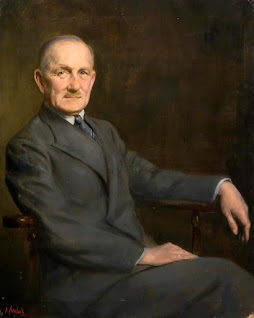 |
| SFN's mother, Maria Louisa (née Prangley) |
1878 - 9 July - Born at Brecon, Wales.
.jpg) |
| The Newcombe brothers (SFN second on right) |
1886 - Newcombe's father, Edward, dies and he is sent to board at Christ's Hospital School with younger brother Harley.
 |
| At Christ's Hospital |
- Attended Felstead School.
1896 - Enters the Royal Military Academy at Woolwich as a Gentleman Cadet. Awarded the Sword of Honour at the RMA.
1898 - Commissioned into the Royal Engineers at Chatham.
 |
| Into the R.E. |
1900 - Joins the 29th Fortress Company at Cape Town, South Africa.
1901 - Joins the Egyptian Army and posted to Sudan. Reconnoitred route for proposed railway east and west of the Nile.
Queen Victoria dies on 22 January.
1907 - Journeyed to upper waters of the Nile to recon and discuss with Belgians possible rail route from Lado Enclave to Belgian Congo.
1909 - Sends secret report on Alexandretta and Baghdad Railway to the War Office.
1911 - Preliminary survey of railway from Abyssinia to Khartoum.
Leaves Egyptian Army. Short spell in the War Office.
1912 - Longmoor Military Railway Training Camp.
1913 - Begins surveys in area of Beersheba, Palestine.
1914 - Surveys in South West Palestine south to Egyptian border. For six weeks he and his men are accompanied by C.L. Woolley and T.E. Lawrence, two archaeologists from the British Museum. Addresses the 49th Annual Meeting of the Palestine Exploration Fund.
Outbreak of World War 1August 1914 - At Compiegne during the retreat from Mons. Successfully blows up the bridge.
Recalled from France he travels with T.E. Lawrence from Marseilles to Alexandria and then onto Cairo by train.
1915 - Appointed as Commander in the 2nd Australian Division Royal Engineers during the Dardanelles campaign.
1916 - Awarded DSO for rescue attempt in a tunnelling operation.
Returns to the Western Front and distinguishes himself during the battle for Pozieres Ridge.
Sherif Hussein of Mecca launches the Arab Revolt.
1917 - Joins T.E. Lawrence in the Hejaz as head of the Military Mission. Commences raids against the Hejaz Railway.
 |
| Newcombe's arrival at Umlej, January 1917 |
In late October he takes command of a small mobile force and initiates a raid behind enemy lines during the Third Battle of Gaza. His force is overwhelmed and he and his men are taken into captivity.
1918 - Escaped from prison camp at Brusa with assistance from Elizabeth Chaki. Returns to Constantinople to help broker peace negotiations with the Turks.
1918 - 11 November - The Armistice comes into effect.
1919 - Briefly joins Lawrence at the Paris Peace Conference.
1919 - 15 April - Marries Elizabeth (Elsie) Chaki in the Registry Office at Henrietta Street, Covent Garden.
 |
| Elizabeth (Elsie) Newcombe, née Chaki (1919) |
On the following day the couple are blessed in a religious service in St. Margaret's Church in the grounds of Westminster Abbey. St. Margaret’s, known as ‘the Church on Parliament Square’, is a 12th-century church next to Westminster Abbey. It’s also sometimes called ‘the parish church of the House of Commons’.





.jpg)






